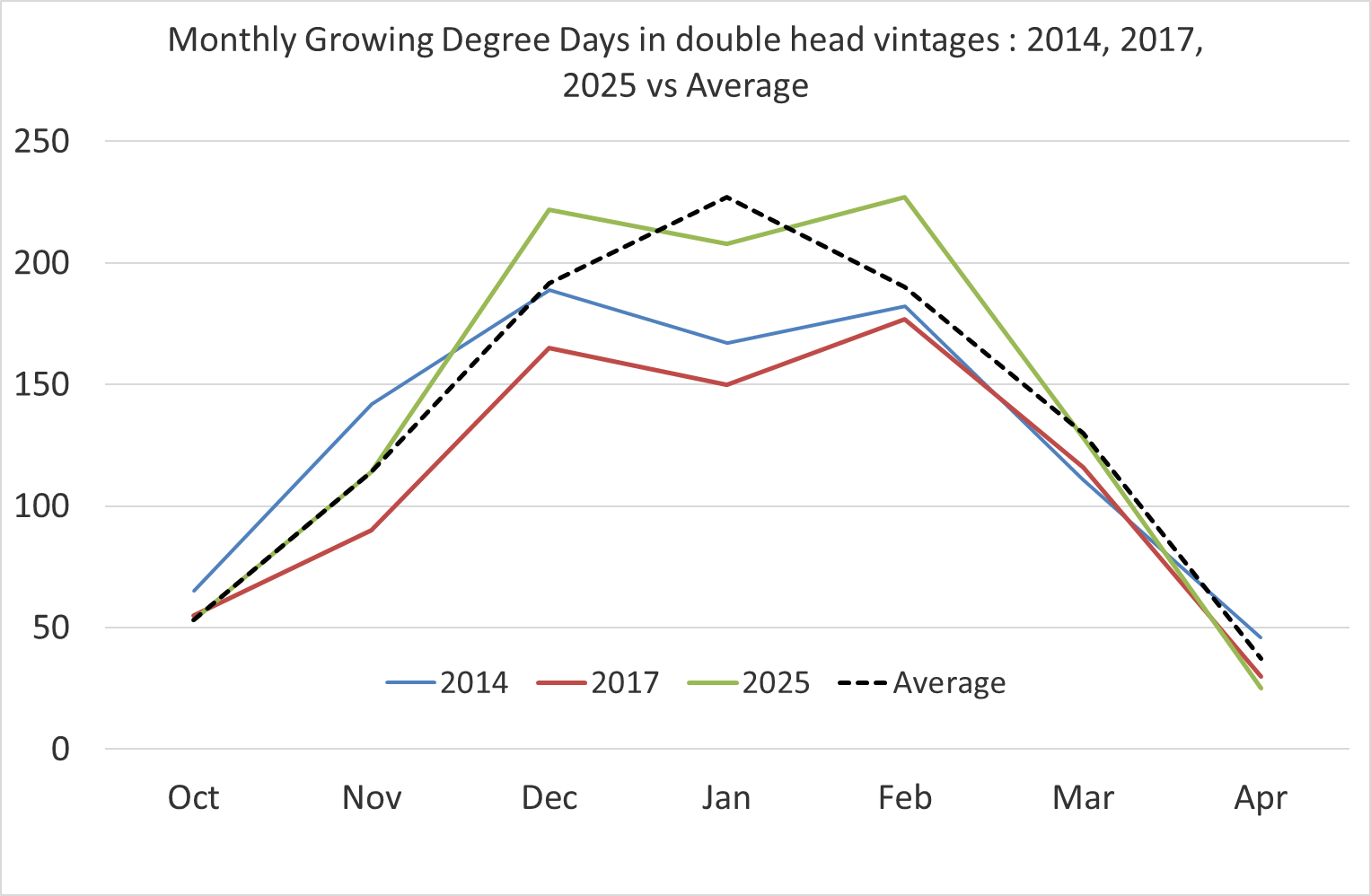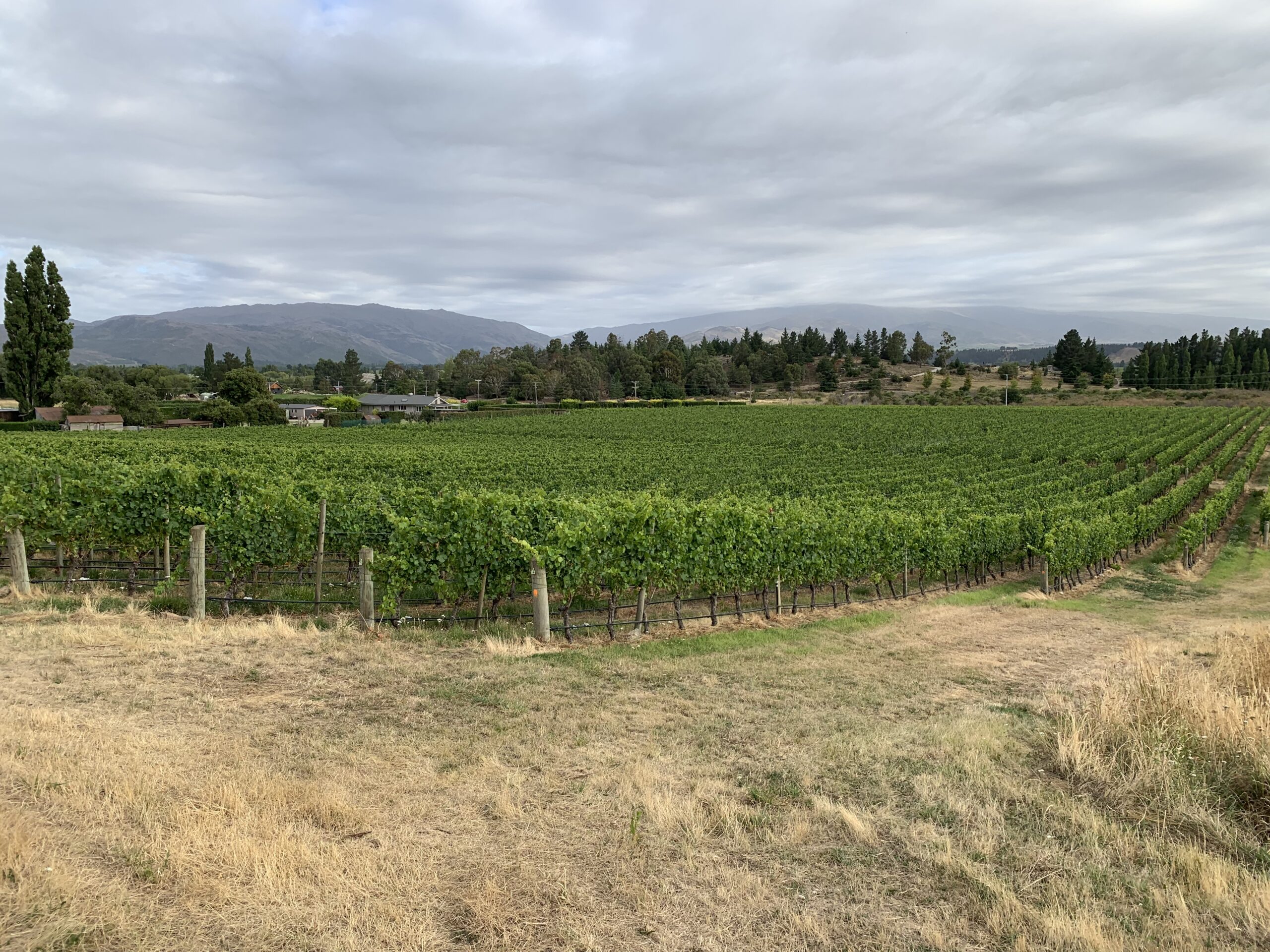
2025 – a rare double header vintage
The 2025 vintage was climatically one of our easier vintages in recent years but this was offset by some uneven canopy growth across the vineyard. Overall, the growing season was slightly warmer (977 GDD) than average (943 GDD) and rainfall was below normal for much of the season. Spring brought the usual frosts and a rather calamitous frost for much of Central Otago on 3 November. Fortunately, Grasshopper Rock was left unscathed due to reliable frost protection, but it did damage many vineyards at a critical growth stage. Flowering in mid-December was one of our best in many years due to an extended period of above average temperatures and no rain. January turned cold with temperatures below average. February and March were slightly warmer than average with little rain. Although temperatures dropped to zero or slightly below before harvest, we did not frost fight – something of a rarity this far south.
Harvest dates: 10 to 15 April 2025. Average bunch weight 115 g (105 g LTA).
In a year when both December and February are warmer than January (normally our warmest month), we call these Grasshopper Rock double headers (see charts below). The previous double header vintages were 2014 and 2017, both outstanding wines – fingers crossed for 2025.
Monthly breakdown
September 2024. September received 10+ days when overnight temperatures dropped below zero with some nights dropping as low as -4 degree C. Rain days where higher than average with 80 mm of rain in total.
October Budburst was around 5 October. Frosts on 16 and 17 October required frost fighting sprinklers to be turned on. A big rain event on 26 October with 55 mm rain was to be the last decent rainfall for the next 90 days. October temperatures were average.
November growing degree days* were average and the mean temperature 13.6 degrees C. Three frost events (3rd, 17th and 24th November) required sprinklers turned on. The frost of 3 November was the most damaging frost across Central Otago vineyards since 2003. The early estimations were for up to 30% total grape crop loss across the region but it will likely be less when actual tonnages are counted. The reason the 3 November frost was so damaging was the timing, the new season growth stage of young shoots with florescence exposed, and the lack of an inversion layer (where warm air overlies cool air). Many sites with historically low risk were damaged to varying degrees.
December growing degree days were 16% above average and the mean temperature was 17.2 degrees C. No frosts and no rain were recorded until after flowering. The ideal conditions for flowering produced one of our best fruit sets in recent years. By 10 December 50% of flowering was complete.
January 2025 saw a change in weather patterns with more cloud and cooler temperatures. The month was cooler than December with a mean January temperature of 16.7 degrees C. In the past 20 years we have experienced a cooler January than December in only vintages 2006, 2012, 2014 and 2017. On 26 January 14 mm rain was recorded and until this rain we had only received 21 mm since 26 October.
February was warmer than average and one of the warmest February we have experienced in 20 years.
March was a continuation with good ripening conditions. GDDs were typical of our historic average.
Into April and the last week or two of ripening seemed to drag out as it took time for full ripeness and flavours developed. Hand picking started 10 April. We had four days during harvest when temperatures dropped to zero or below and the canopy started to yellow off, signaling the end of the season.
Average bunch size this year was 115 g which is 10% above average. Larger than average berries and bunches results in tighter bunches and a more complex ripening – not better or worse just needing a bit more time on the vine. Maybe 2025 wines will be somewhere between a 2019 and 2014 vintage Grasshopper Rock – we will see in time.
*Growing degree day (GDD) is the day’s mean temperature less 10 deg C. It is a useful measure of the heat available for growth of the vine. For example 30 days of 6 GDD = 180 GDD for the month.
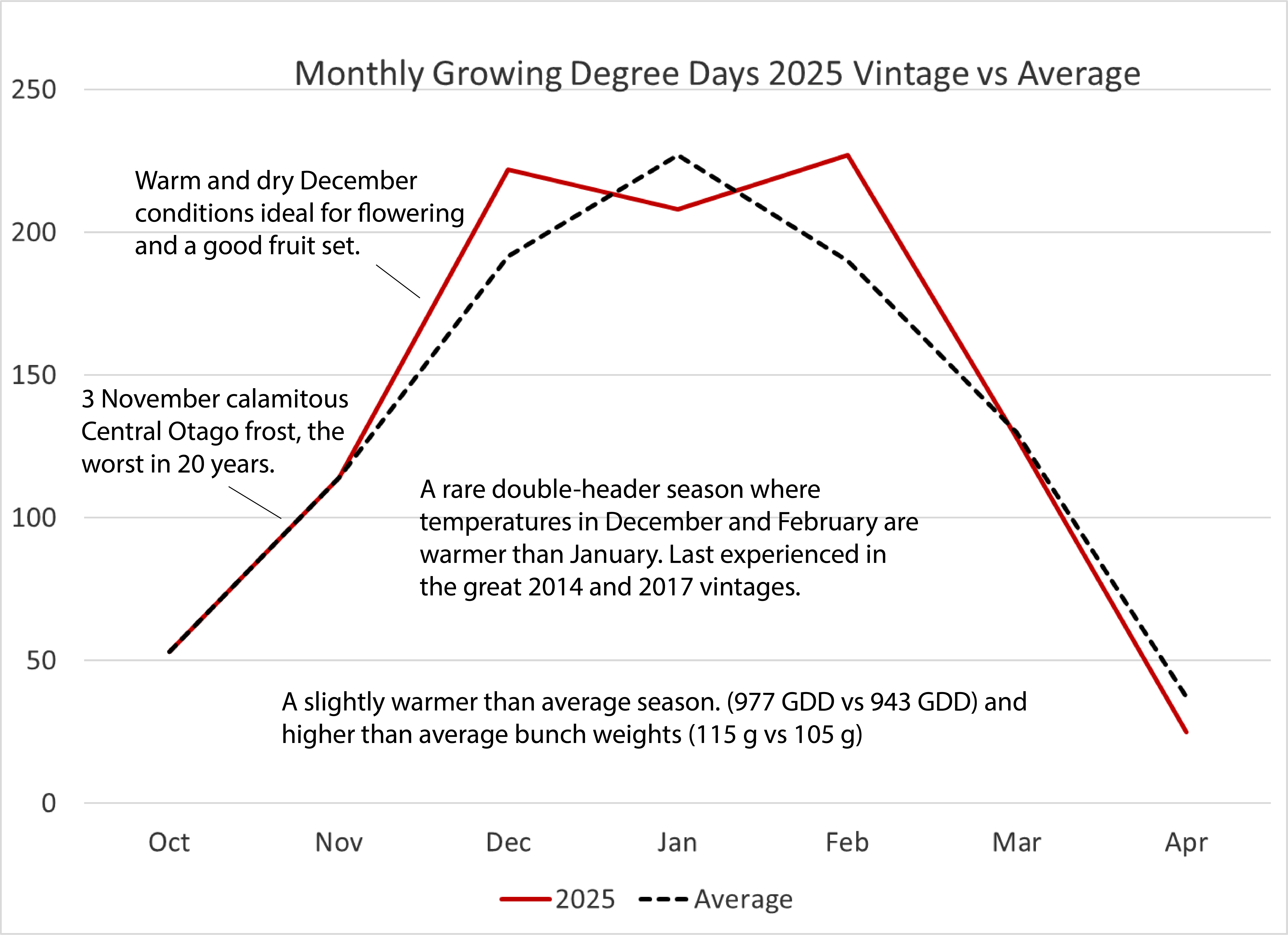
30 October 2024 Shoot development show inflorescence. Days before Central Otago’s most damaging frost event in 20 years. Grasshopper Rock vines were protected by frost sprinklers.
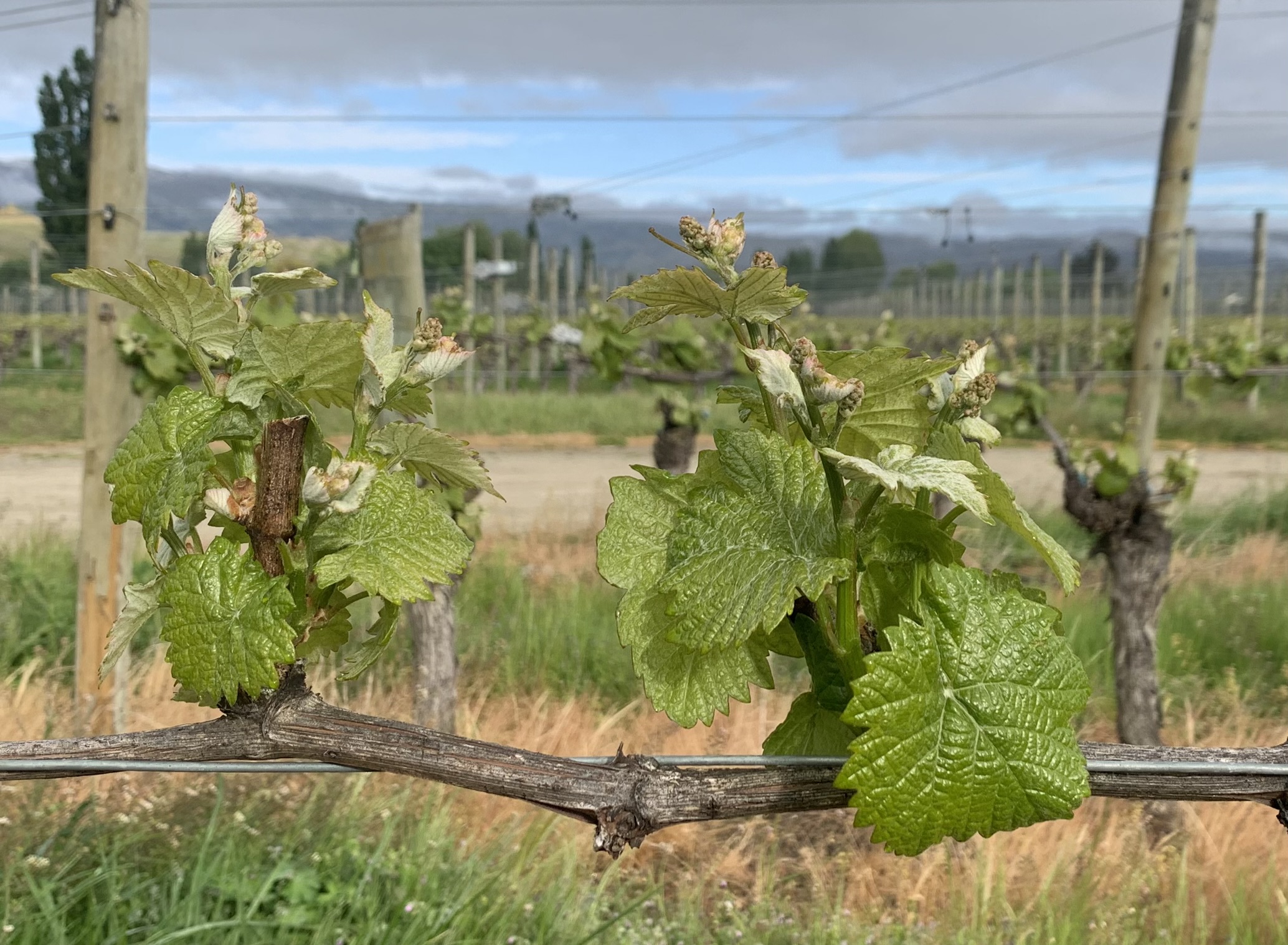
11 December 2024 Flowering 50% complete.
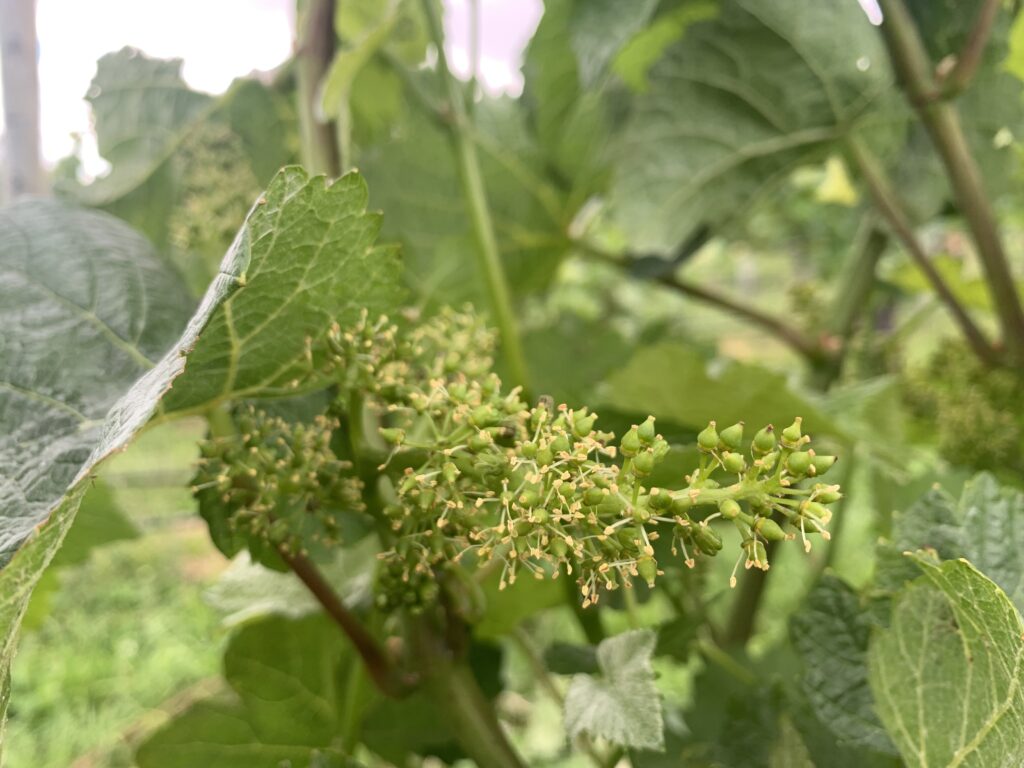
13 January 2025 Grapes developing rapidly prior to veraison.
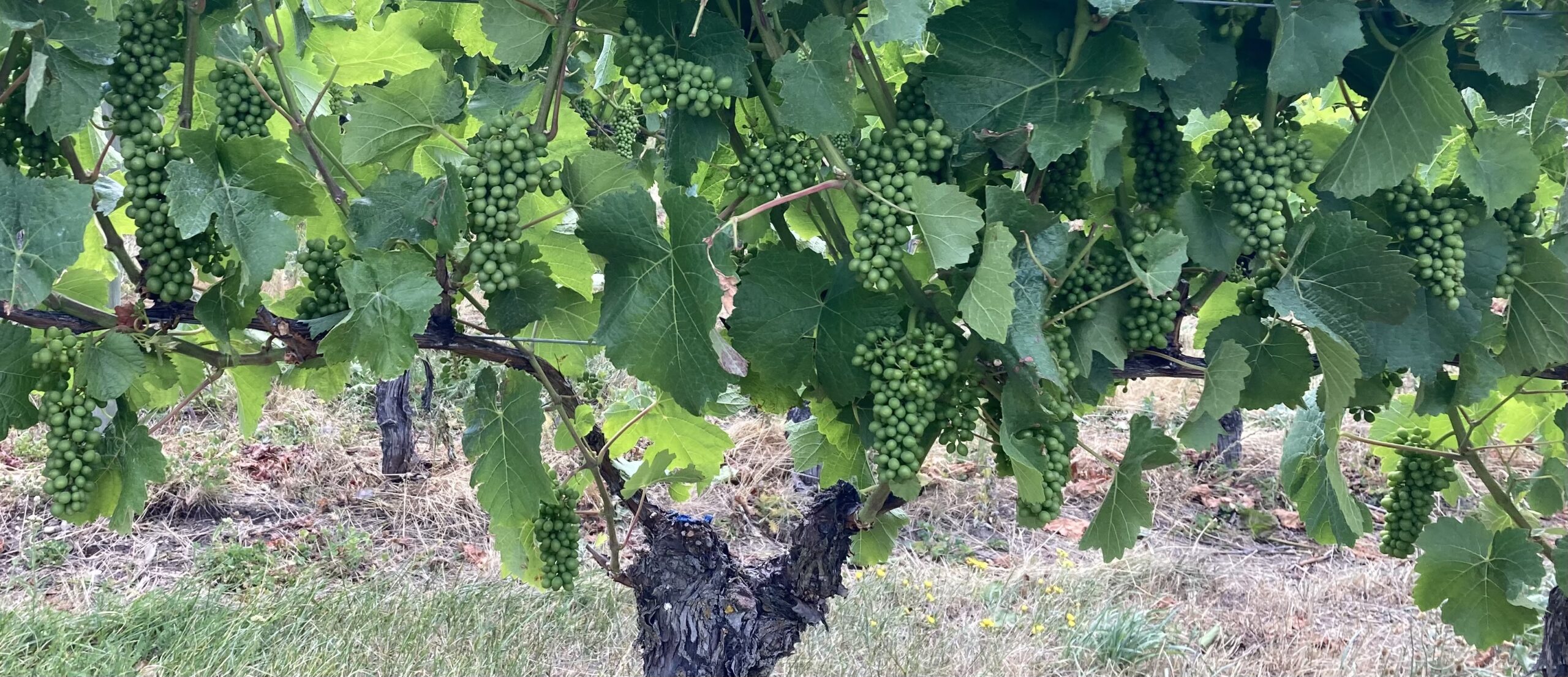
5 March 2025 – five weeks before harvest.
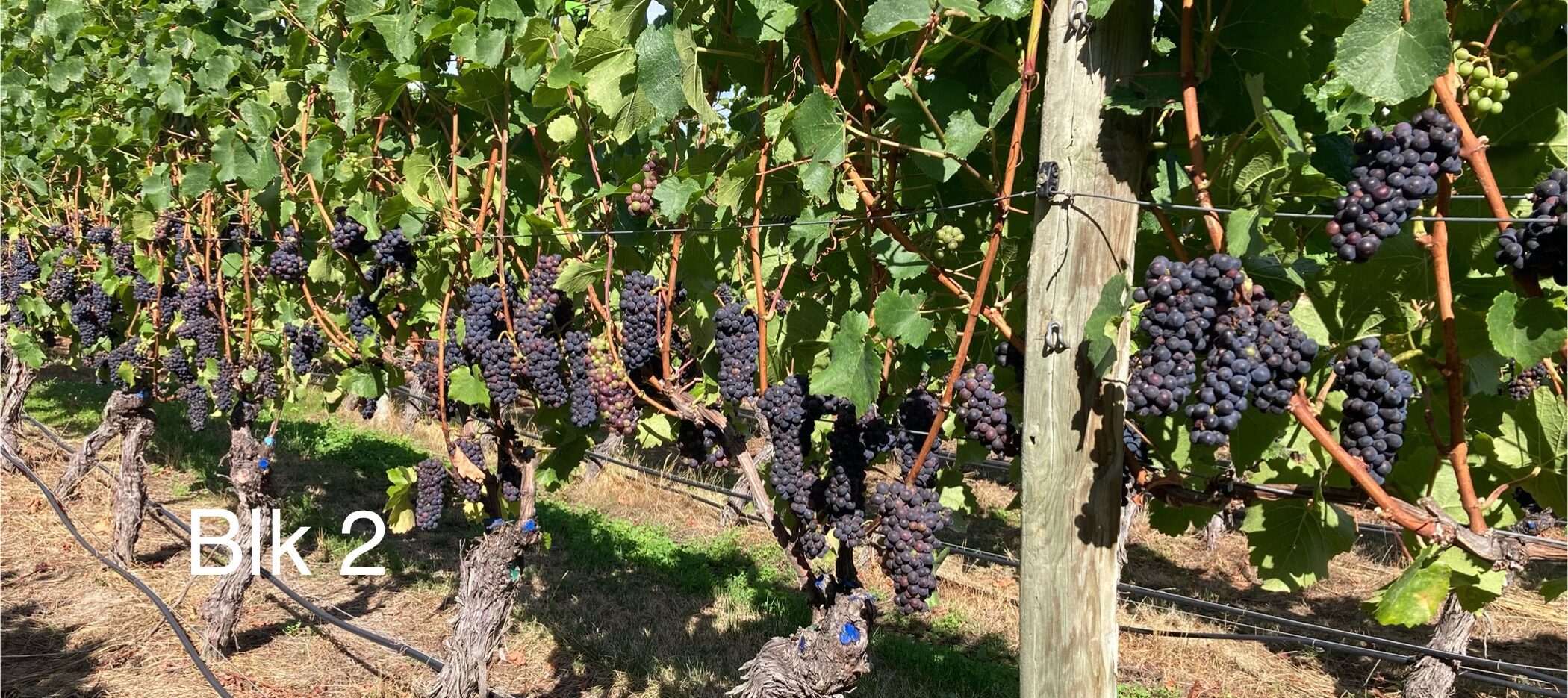
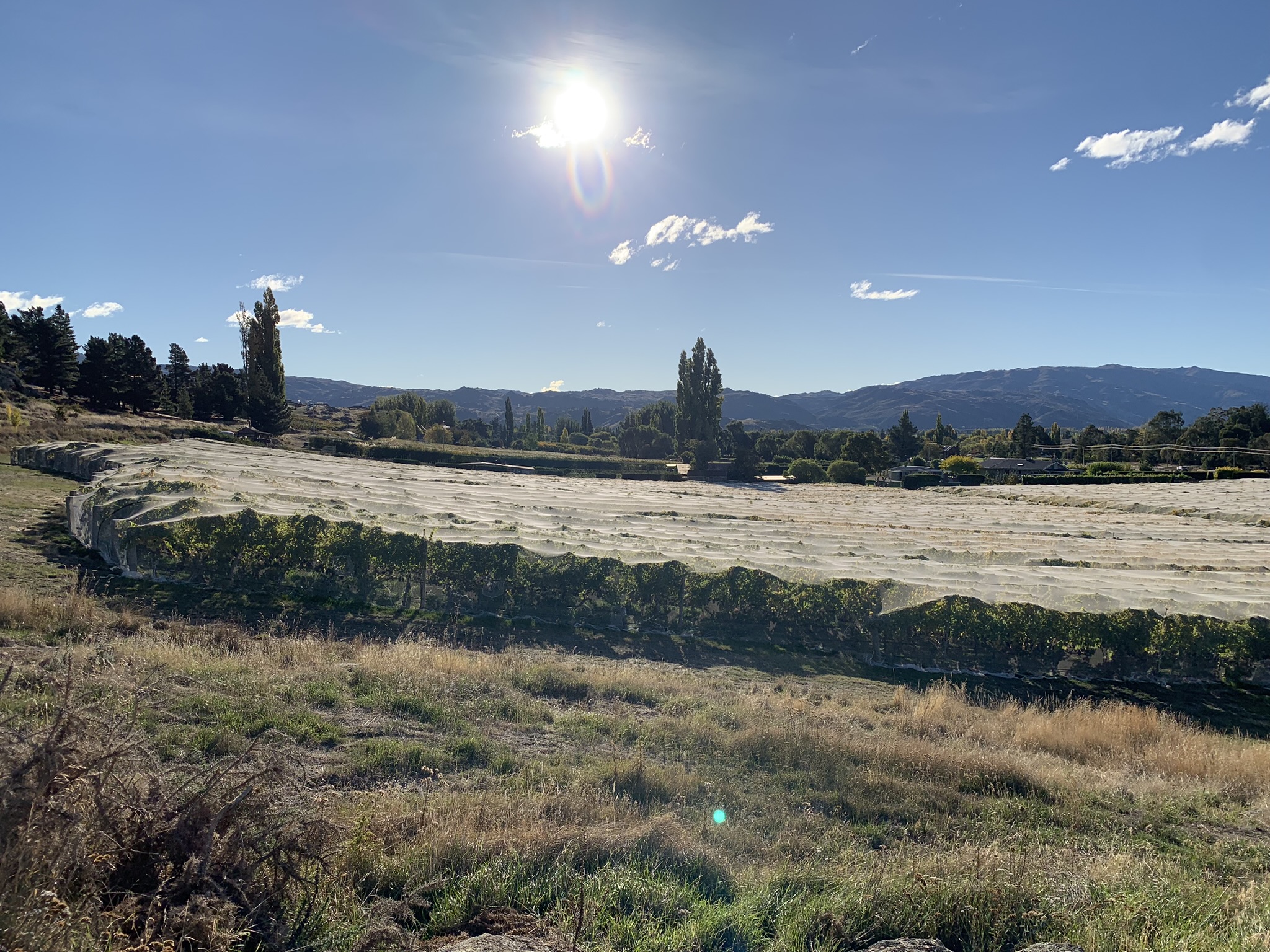

Grasshopper Rock double header vintages.
